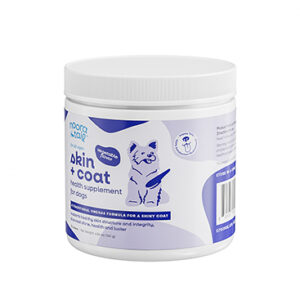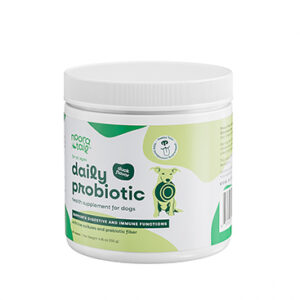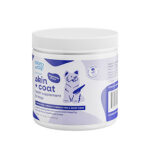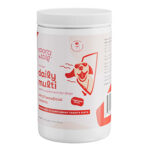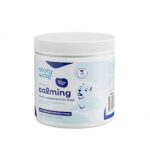1. Identify the Infection

Ear infections are common ailments in dogs, causing discomfort, pain, and potential long-term health issues if left untreated. As a responsible dog owner, it’s crucial to recognize the signs of an ear infection and take immediate action to alleviate your pet’s suffering. This comprehensive guide will provide you with the essential steps to effectively treat dog ear infections at home and when to seek veterinary care.
Identifying the Infection
Symptoms of Ear Infection in Dogs:
- Head shaking or tilting
- Scratching or pawing at the ears
- Redness, swelling, or discharge from the ears
- Odor from the ears
- Pain or sensitivity when touching the ears
- Loss of hearing
- Lethargy or behavior changes
Diagnostic Tests
Confirming an ear infection requires proper diagnosis by a veterinarian. They will perform diagnostic tests such as:
- Otoscopy: Using an otoscope, the veterinarian examines the ear canal and surrounding structures for inflammation, discharge, or foreign objects.
- Cytology: A sample of ear discharge is examined under a microscope to identify the type of bacteria, yeast, or parasites causing the infection.
Treatment Options
The treatment for a dog ear infection depends on the underlying cause and severity. Common treatment options include:
1. Topical Medications:
- Antibiotic or antifungal ear drops: To kill bacteria or yeast that have caused an infection.
- Anti-inflammatory ear drops: To reduce inflammation and pain.
- Cleaning solutions: To gently remove discharge and debris from the ear canal.
2. Oral Medications:
- Systemic antibiotics or antifungals: For severe or widespread infections that cannot be treated topically.
- Anti-inflammatory medications: To alleviate pain and inflammation.
3. Surgical Intervention:
- In rare cases, surgical intervention may be necessary to address underlying structural abnormalities or remove foreign objects from the ear canal.
Home Care Instructions
Follow your veterinarian’s instructions for administering medications and cleaning your dog’s ears.
- Cleaning the ear canal: Use cotton balls or gauze soaked in a veterinarian-recommended cleaning solution to gently wipe away any discharge or debris from the outer part of the ear canal. Avoid using cotton swabs, as they can damage the canal.
- Administering ear drops: Gently pull back your dog’s earflap and tilt their head to allow the drops to flow into the ear canal. Massage the base of the ear for a few seconds to help distribute the medication.
- Monitoring progress: Keep an eye on your dog’s symptoms and report any changes to your veterinarian.
When to Seek Veterinary Care
If your dog’s ear infection does not improve within a few days of home treatment, or if their symptoms worsen, it’s essential to seek veterinary care immediately. Veterinary intervention may be necessary if:
- The infection is severe or persistent.
- Your dog is experiencing pain or discomfort.
- Your dog has a history of ear infections.
- The infection has spread to other parts of the body.
Conclusion
Treating dog ear infections requires a combination of proper identification, appropriate treatment, and careful home care. By following the steps outlined in this guide, you can effectively address the issue and provide your beloved companion with relief and a healthier life. Remember to always consult with your veterinarian for the best course of treatment personalized for your dog.
2. Prescribe Medications

Ear infections are a common health concern for dogs, causing discomfort, pain, and potentially serious complications if left untreated. While it’s essential to seek professional veterinary care for an accurate diagnosis and appropriate treatment, knowing the types of medications commonly prescribed for dog ear infections can provide pet owners with valuable information.
Antibiotics
Bacterial infections are the most prevalent cause of ear infections in dogs. In these cases, antibiotics are essential to eliminate the bacteria and treat the infection effectively. Common antibiotics used for dog ear infections include:
- Amoxicillin
- Clavamox
- Cephalexin
- Enrofloxacin
- Ciprofloxacin
The type of antibiotic prescribed will depend on the specific bacteria causing the infection, determined through a culture and sensitivity test. The duration of antibiotic treatment typically ranges from 7 to 14 days, depending on the severity of the infection.
Antifungals
Fungal infections, usually caused by Malassezia pachydermatis yeast, are less common than bacterial infections. However, they can lead to chronic or recurrent ear problems. Antifungal medications commonly prescribed for dog ear infections include:
- Itraconazole
- Fluconazole
- Miconazole
- Clotrimazole
Antifungal treatments typically last longer than antibiotics, often for several weeks or even months, to ensure the complete eradication of the fungus.
Anti-Inflammatories
Ear infections cause inflammation and discomfort in the ear canal. Anti-inflammatory medications can help reduce swelling, pain, and itching associated with the infection. Common anti-inflammatories used for dog ear infections include:
- Prednisone
- Dexamethasone
- Meloxicam
- Rimadyl
Anti-inflammatories are often prescribed in conjunction with antibiotics or antifungals to address both the underlying infection and its associated symptoms.
Additional Medication Considerations
In addition to the aforementioned medications, other treatments may be necessary depending on the individual case:
- Ear Cleaning Solutions: Ear cleaning solutions are essential for removing debris, discharge, and bacteria from the ear canal. They help flush out infection and promote healing.
- Ear Drops: Ear drops containing antibiotics, antifungals, or corticosteroids can be instilled directly into the ear canal to provide localized treatment.
- Systemic Medications: In severe or recurring cases, systemic medications, such as oral antibiotics or antifungals, may be necessary to address the infection throughout the body.
Importance of Veterinary Consultation
It’s important to note that only a licensed veterinarian can diagnose and prescribe medications for dog ear infections. While information about medications is available, self-treating your dog can lead to inappropriate medication use, incorrect dosage, and potential health risks.
Always seek professional veterinary care if your dog shows any signs of an ear infection, such as head shaking, excessive scratching, discharge from the ear, or odor. The veterinarian will perform a thorough examination, determine the underlying cause of the infection, and prescribe the appropriate medications to ensure your dog’s health and well-being.
3. Clean the Ear Canal

Dog ear infections are a common ailment that can cause discomfort and pain for your furry friend. Prompt treatment is essential to prevent further complications. Among the essential steps in ear infection management is cleaning the ear canal, a crucial procedure that helps remove debris, discharge, and promote healing.
Importance of Cleaning the Ear Canal
The ear canal is an enclosed space that can easily accumulate bacteria, yeast, and debris. These can contribute to inflammation, pain, and discomfort. Thoroughly cleaning the ear canal helps:
- Remove infectious organisms and excess discharge
- Promote proper drainage and aeration
- Create an environment conducive to healing
Prescribed Ear Cleaner
Use an ear cleaner specifically formulated for dogs. Over-the-counter ear cleaners may contain ingredients that can further irritate the ear canal. Your veterinarian will prescribe an appropriate cleaner based on the underlying cause of the infection.
Flushing the Canal
Follow these steps to gently flush the ear canal:
- Prepare the materials: Gather the prescribed ear cleaner, a syringe (without the needle), cotton balls, and a small towel.
- Secure your dog: Gently restrain your dog and tilt their head so the affected ear is facing up.
- Fill the syringe: Draw up the prescribed amount of ear cleaner into the syringe.
- Insert the syringe: Gently insert the syringe tip into the ear canal, avoiding touching the eardrum.
- Flush the canal: Slowly depress the plunger to flush the canal with the cleaner.
- Wipe the ear: Use cotton balls to gently wipe away any excess cleaner, debris, or discharge from the outer ear.
- Repeat for the other ear: If both ears are affected, repeat the flushing process for the other ear.
Removing Debris and Discharge
Once you have flushed the ear canal, use cotton balls to gently remove any remaining debris or discharge. Be careful not to push the cotton balls too deeply into the ear. If you encounter excessive discharge or debris that is difficult to remove, consult with your veterinarian.
Frequency of Cleaning
The frequency of ear cleaning will depend on the severity of the infection and your veterinarian’s instructions. In general, it is recommended to clean the ear canal daily until the infection resolves.
Tips for Successful Cleaning
- Be gentle and avoid causing discomfort to your dog.
- Use a new cotton ball for each cleaning to prevent contamination.
- Do not use cotton swabs, as they can push debris further into the ear canal.
- If your dog struggles or shows discomfort, consult with your veterinarian.
Conclusion
Cleaning the ear canal is an essential step in treating dog ear infections. By carefully following the steps outlined above, using prescribed ear cleaners, and removing debris and discharge, you can help your furry friend experience relief and promote faster healing. Remember to consult with your veterinarian for proper guidance and to determine the appropriate cleaning frequency for your dog’s specific condition.
4. Apply Topical Treatments

Ear infections are a common ailment in dogs, causing discomfort and potentially leading to serious health complications if left untreated. In this comprehensive guide, we will delve into the causes, symptoms, and effective treatment options for dog ear infections, with a specific focus on the use of topical treatments.
What Causes Ear Infections in Dogs?
Dog ear infections can stem from various underlying medical conditions and external factors, including:
- Allergies (food, environmental)
- Bacterial or fungal infections
- Parasites (ear mites)
- Foreign objects (grass, twigs)
- Physical trauma
Recognizing the Symptoms
Ear infections can manifest in a range of symptoms, most commonly:
- Ear pain and discomfort
- Shaking or scratching of the ears
- Discharge from the ear (yellow, brown, or bloody)
- Odor from the ear
- Loss of balance or head tilt
When to Seek Veterinary Attention
While some ear infections may resolve on their own, it’s crucial to seek veterinary attention if your dog exhibits any of the symptoms mentioned above. Prompt treatment can prevent the infection from spreading and causing more severe complications, such as deafness or even meningitis.
Treatment Options: Topical Treatments
Topical treatments play a vital role in treating dog ear infections. These treatments are applied directly to the affected area to deliver medication and alleviate symptoms.
1. Medicated Ear Drops
Medicated ear drops contain antibiotics or antifungal agents that target the underlying infection. They are commonly used for bacterial or fungal ear infections. The veterinarian will prescribe a specific drop based on the type of infection and your dog’s individual needs.
2. Antifungal Powders or Sprays
Antifungal powders or sprays are designed specifically for yeast infections, which are caused by a fungus. These preparations effectively kill the fungus and reduce inflammation.
How to Apply Topical Treatments
Properly administering topical treatments is crucial for their effectiveness. Follow these steps:
- Clean the affected ear with a gentle ear cleaner and cotton balls.
- Tilt your dog’s head to one side and gently pull the ear flap back to expose the ear canal.
- Instill the prescribed number of drops into the ear canal.
- Massage the base of the ear for a few seconds to distribute the medication.
- Avoid using cotton swabs in the ear canal, as they can cause damage.
Frequency and Duration of Treatment
The frequency and duration of topical treatments will vary depending on the type and severity of the infection. In general, medicated ear drops are applied twice or three times daily for 7-14 days. Antifungal powders or sprays may be used daily for a few weeks.
Additional Considerations
- Follow the veterinarian’s instructions strictly regarding dosage and frequency.
- Do not discontinue treatment prematurely, even if the symptoms subside.
- If the infection does not resolve or worsens, consult your veterinarian immediately.
- Regularly clean your dog’s ears to prevent future infections.
Conclusion
Treating dog ear infections effectively requires prompt veterinary care and the appropriate use of topical treatments. By recognizing the symptoms, understanding the causes, and adhering to the prescribed treatment plan, you can ensure your dog’s comfort and well-being. Remember that early detection and proper treatment are key to preventing complications and maintaining a healthy, happy pet.
5. Manage Pain and Discomfort

Ear infections are a common ailment in dogs, causing discomfort and pain. Effective treatment involves not only addressing the underlying cause but also managing the associated symptoms. One crucial aspect of managing ear infections is effectively reducing the pain and discomfort experienced by your furry companion.
Understanding the Causes of Ear Pain
Ear infections can ignite inflammation within the ear canal, causing pain, swelling, and tenderness. The buildup of bacteria, yeast, or mites can further irritate the sensitive tissues, exacerbating the discomfort.
Pain Management Options
1. Oral Pain Relievers:
- Veterinarians may prescribe oral pain relievers, such as meloxicam or tramadol, to alleviate pain and inflammation.
- These medications should be administered strictly as directed and monitored closely by your veterinarian.
2. Warm Compresses:
- Warm compresses can provide soothing relief by reducing inflammation and promoting blood flow.
- Soak a clean washcloth in warm water, wring out the excess, and gently apply it to the affected ear for 10-15 minutes, several times a day.
Other Comfort Measures:
- Elizabethan collar: Also known as a cone, this device prevents your dog from scratching or rubbing its ears, minimizing further irritation.
- Regular cleaning: Gently cleanse the affected ear using a veterinarian-approved ear cleaning solution and cotton balls. Avoid using cotton swabs, which can push debris deeper into the canal.
- Environmental modifications: Keep your dog away from environmental irritants, such as smoke, dust, or pollen, which can worsen discomfort.
Additional Considerations:
- Type of infection: The type of ear infection (bacterial, yeast, or parasitic) will influence the choice of pain management strategies.
- Severity of infection: Severe infections may require more intensive pain management, including prescription medications or surgery.
- Underlying health conditions: If your dog has any underlying health conditions, it is essential to consult with your veterinarian to determine the most appropriate pain management plan.
Conclusion:
Managing pain and discomfort in dog ear infections is essential for your pet’s well-being. By effectively addressing the underlying cause of the infection and implementing appropriate pain management measures, you can help your furry friend overcome this uncomfortable condition and restore their quality of life. Remember to closely monitor your dog’s response to treatment and consult with your veterinarian for any concerns or changes in their condition.
6. Monitor Progress
Ear infections, a common discomfort for dogs, require attentive treatment and monitoring for effective resolution. While initial treatment involves cleaning and antibiotic or antifungal medications, tracking the infection’s progression is crucial for successful management.
Regular Ear Re-examination:
Regularly inspecting the affected ear allows for timely detection of improvement or setbacks. Observe the following signs:
- Appearance: Is the ear canal less inflamed and swollen? Is there a reduction in redness or discharge?
- Odor: Has the unpleasant odor associated with the infection diminished?
- Discharge: Is the discharge amount decreasing, changing in color, or becoming less thick?
- Pain or Discomfort: Is the dog experiencing less scratching or head shaking?
Assessment of Response:
Based on the observed changes, assess the dog’s response to the treatment:
- Improvement: If the ear shows significant improvement, continue with the current treatment plan.
- No Change: If there is no improvement or if the symptoms persist, consult with the veterinarian to adjust the treatment.
- Worsening: If the ear infection worsens or if new symptoms arise, seek immediate veterinary attention.
Adjusting the Treatment Plan:
The veterinarian may modify the treatment plan based on the dog’s response:
- Medication: Adjust the dosage or frequency of antibiotics, antifungals, or anti-inflammatory medications.
- Ear Cleaning: Revise the frequency or technique of ear cleaning to optimize results.
- Additional Diagnostic Tests: If the infection persists despite treatment, additional tests may be recommended to rule out underlying causes.
Importance of Monitoring Progress:
Monitoring progress is paramount for several reasons:
- Early Detection of Improvement: Timely detection of improvement allows for swift treatment adjustments, ensuring the infection is resolved effectively.
- Avoidance of Resistance: Prolonged use of ineffective antibiotics can lead to antibiotic resistance, making future treatments less successful.
- Prevention of Complications: If the infection is not treated adequately or if it persists, it can spread to other parts of the ear or even the brain.
- Ensuring Recovery: Regular monitoring helps ensure that the dog recovers fully from the ear infection and does not experience recurring symptoms.
Conclusion:
Monitoring the progress of a dog’s ear infection is essential for optimal treatment outcomes. By regularly re-examining the ear, assessing the dog’s response, and adjusting the treatment plan accordingly, you can ensure effective management of the infection and a speedy recovery for your canine companion.
7. Prevent Recurrences
Dog ear infections can be a recurring problem for many canines, causing discomfort and affecting their overall well-being. Prevention is key in reducing the chances of your dog suffering from this issue. Here are some effective measures to minimize the risk of ear infections and keep your furry companion’s ears healthy:
1. Regular Ear Cleaning
Regular ear cleaning is essential to maintain hygiene and prevent bacteria and yeast from building up in the ear canal. Use a gentle ear cleaner and follow the instructions carefully to avoid accidental damage to the ear. Frequency of cleaning may vary depending on your dog’s breed and lifestyle, but it’s generally recommended to clean once or twice a week.
2. Avoid Excessive Moisture
Excessive moisture in the ear canal creates a favorable environment for bacteria and yeast to thrive. Avoid swimming or bathing your dog too frequently, and if your dog enjoys swimming, make sure to dry their ears thoroughly afterward.
3. Check for Underlying Allergies
Allergies are a common predisposing factor for ear infections. Environmental allergens, such as pollen, dust, and certain foods, can trigger inflammation in the ear canal, making it more susceptible to infection. If your dog is prone to allergies, identify and avoid the triggers as much as possible.
4. Dietary Modifications
Certain dietary sensitivities or imbalances can contribute to ear infections. If your dog has recurring ear infections, consider consulting with a veterinarian about potential dietary changes that could improve their immune system and reduce inflammation.
5. Avoid Harsh Chemicals
Harsh chemicals, such as those found in certain ear cleaning solutions, can irritate the ear canal and make it more prone to infection. Opt for gentle ear cleaners that are specifically designed for dogs.
6. Trim Excess Hair
Excessive hair can trap moisture and create a favorable environment for bacteria and yeast. Trim the hair around your dog’s ears regularly to promote proper ventilation and prevent buildup.
7. Routine Veterinary Check-ups
Regular veterinary check-ups are essential to detect and address any underlying health conditions that may predispose your dog to ear infections. Your veterinarian can perform a thorough ear examination and provide early treatment if an infection is detected.
Additional Tips for Chronic Infections
If your dog suffers from chronic or recurrent ear infections, your veterinarian may recommend additional measures such as:
- Ear irrigation: Flushing the ear canal with a sterile solution can help remove debris and promote healing.
- Medicated ear drops: Antibiotic or antifungal medications may be prescribed to treat the infection.
- Surgery: In severe cases, surgery may be necessary to remove aural polyps or correct anatomical abnormalities that contribute to chronic infections.
By following these preventive measures, you can significantly reduce the risk of recurrent ear infections in your dog and keep their ears healthy and happy. Regular maintenance, attention to underlying factors, and prompt treatment are all crucial in ensuring your canine companion’s comfort and well-being.
8. Surgical Intervention
Ear infections are a common ailment in dogs, causing discomfort, pain, and a host of unpleasant symptoms. While most ear infections can be effectively treated with topical medications and oral antibiotics, severe cases may require surgical intervention to resolve the underlying cause and prevent permanent damage.
When is Surgery Necessary?
Surgery is typically considered when other treatment options have failed or when the infection has become severe or chronic. Some of the indications for surgical intervention include:
- Intractable infections: Ear infections that do not respond to repeated courses of antibiotics or other conventional therapies.
- Otitis media with effusion (OME): A condition where fluid accumulates in the middle ear, causing persistent pain and inflammation.
- Granulomas: Inflammatory growths that develop in the ear canal in response to a long-standing infection.
- Injury to the ear canal: Trauma or other injuries can damage the ear canal, making it more susceptible to infection and requiring surgical repair.
- Foreign bodies: In some cases, foreign objects such as grass awns or insects can become lodged in the ear canal, necessitating removal via surgery.
Bulla Osteotomy: A Common Surgical Procedure
In severe cases of otitis media with effusion, a surgical procedure called bulla osteotomy may be necessary. This involves opening the bulla, a bone-filled cavity in the skull that houses the middle ear, to allow drainage of accumulated fluid. This procedure creates a permanent opening, allowing for better ventilation and drainage, thus reducing the risk of recurrent infections.
Other Surgical Options
In addition to bulla osteotomy, other surgical procedures may be employed to treat dog ear infections, depending on the specific cause and location of the infection. These may include:
- Vertical canal ablation: Removal of the infected portion of the ear canal in cases of severe stenosis (narrowing).
- Total ear canalectomy: Complete removal of the ear canal in extreme cases where infection has caused irreversible damage.
Post-Surgical Care
Following surgical intervention, it is crucial to follow your veterinarian’s instructions carefully to ensure a successful recovery. This typically involves:
- Administering antibiotics to prevent infection.
- Pain management to alleviate discomfort.
- Ear cleaning to remove debris and promote healing.
- Monitoring the incision site for signs of infection or complications.
Preventing Ear Infections
While surgery can be an effective treatment for severe ear infections, it is always preferable to prevent these infections from occurring in the first place. Regular ear cleaning, prompt treatment of any underlying allergies or skin conditions, and avoiding exposure to irritants can all help to reduce the risk of ear infections in dogs.
Conclusion
Surgery is a last resort option for treating severe dog ear infections that have failed to respond to other therapies. While it can be a complex and invasive procedure, it is often necessary to restore a dog’s ear health and prevent further complications. By following your veterinarian’s instructions carefully and taking steps to prevent future infections, you can help ensure your beloved pet enjoys a long and healthy life free from ear infections.










